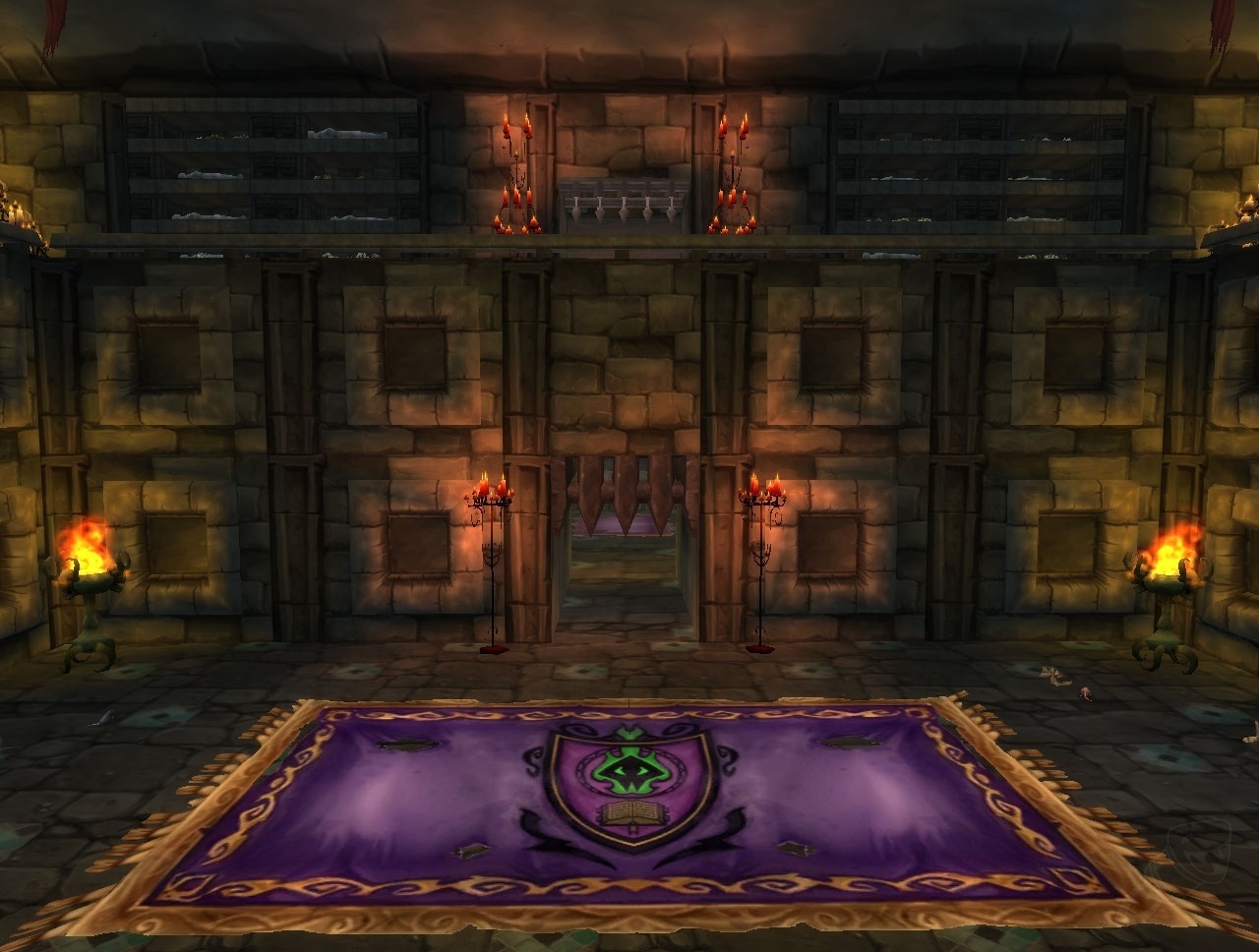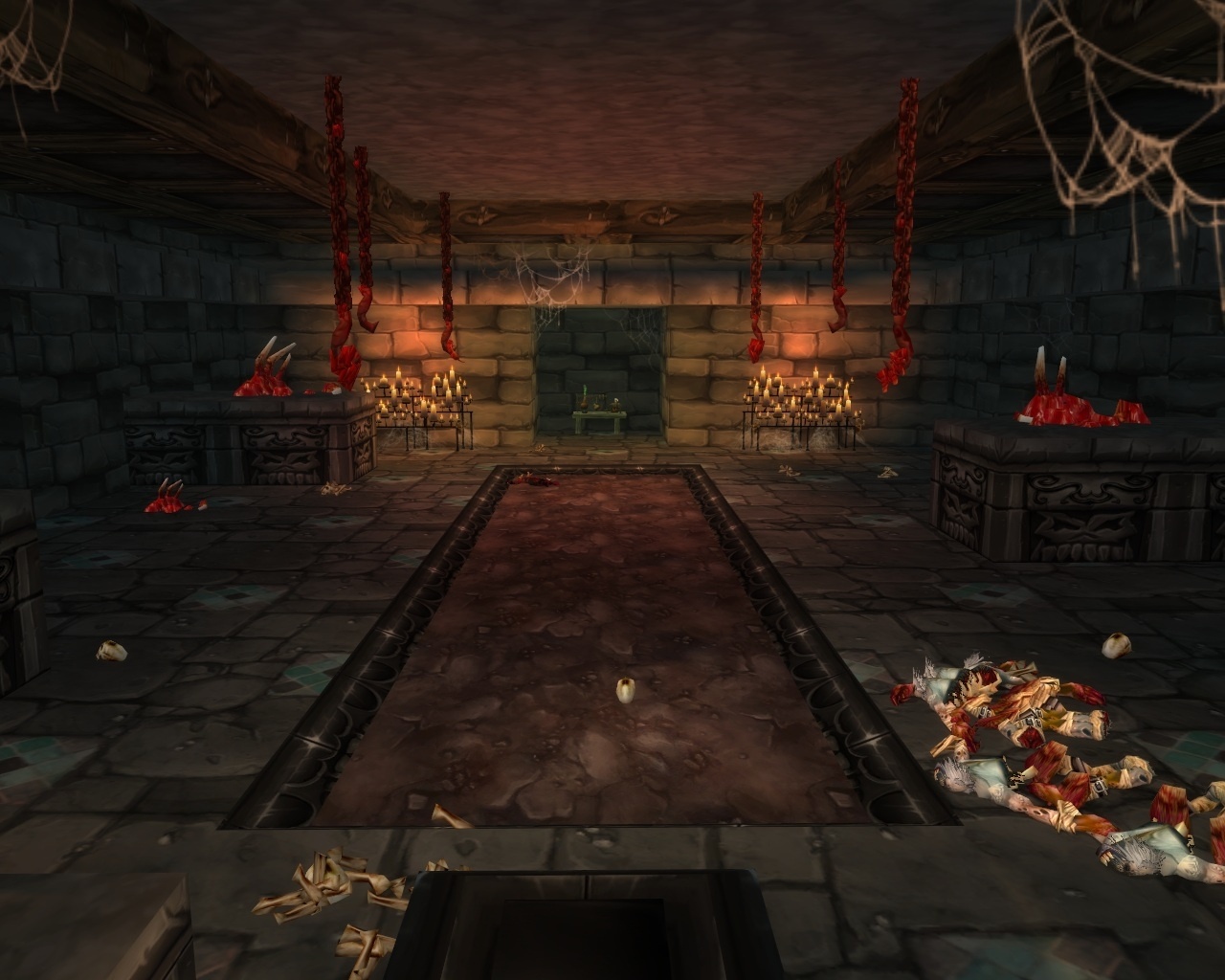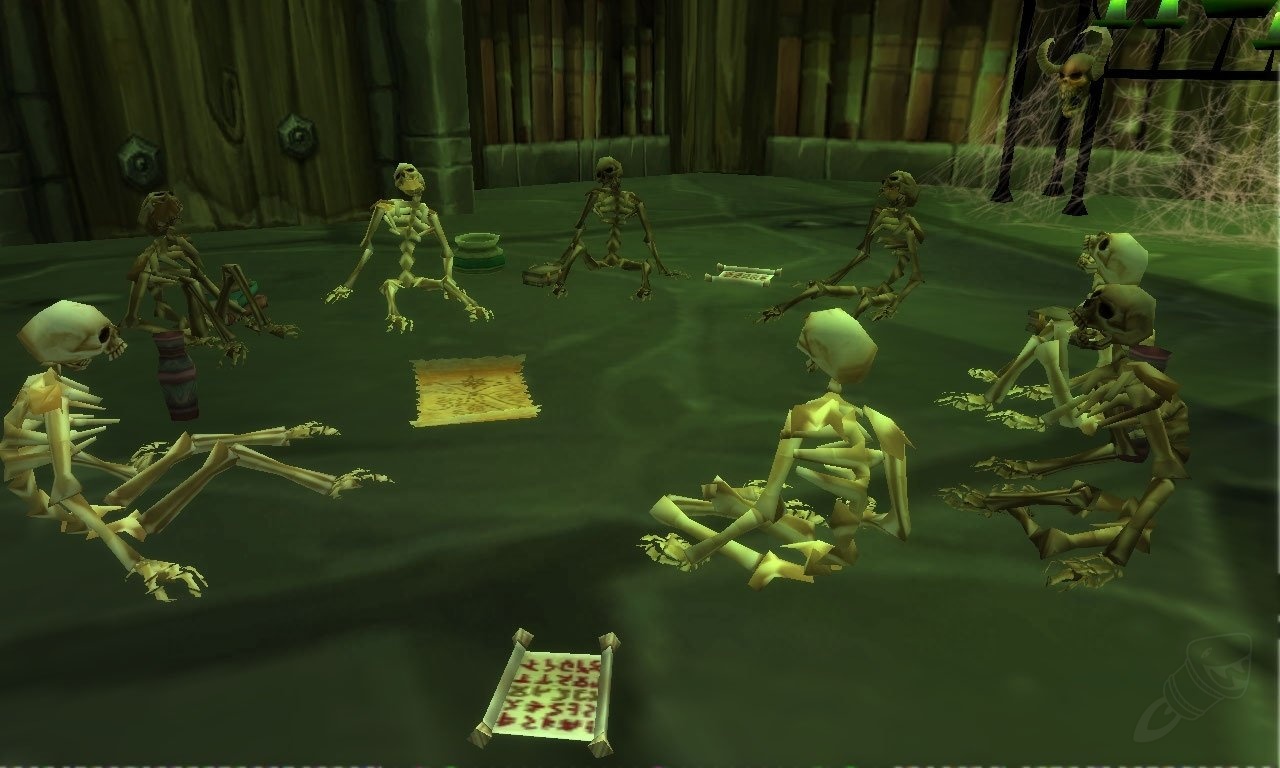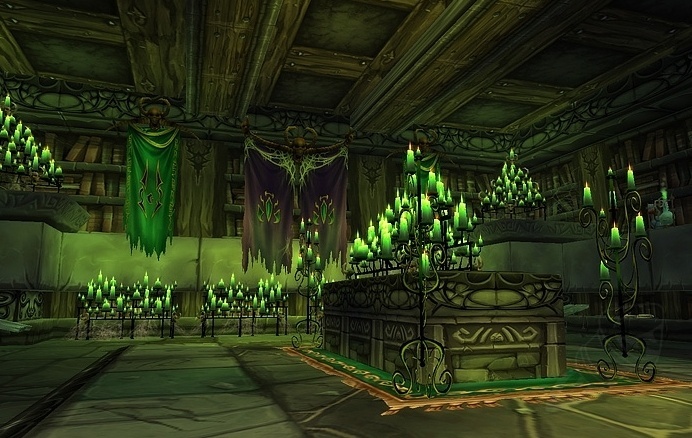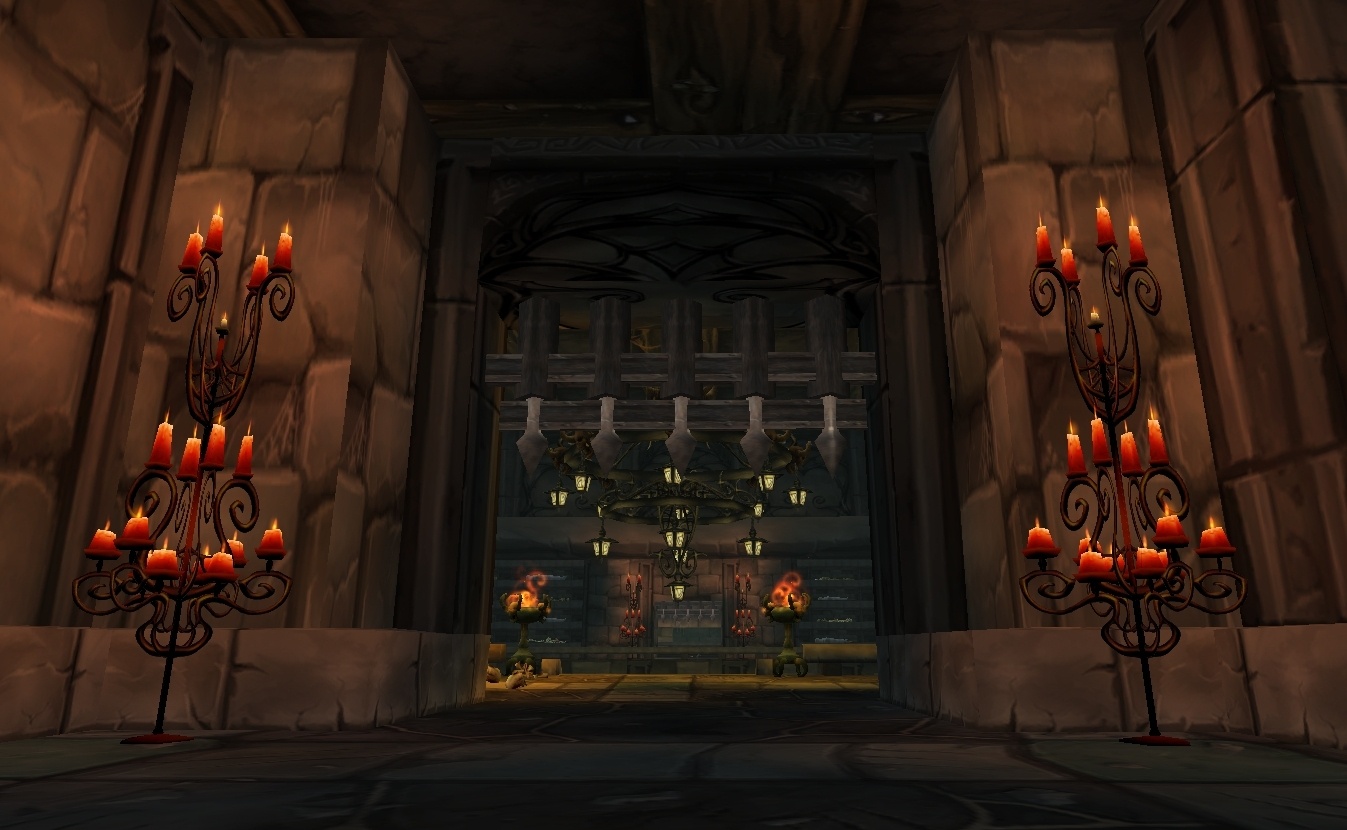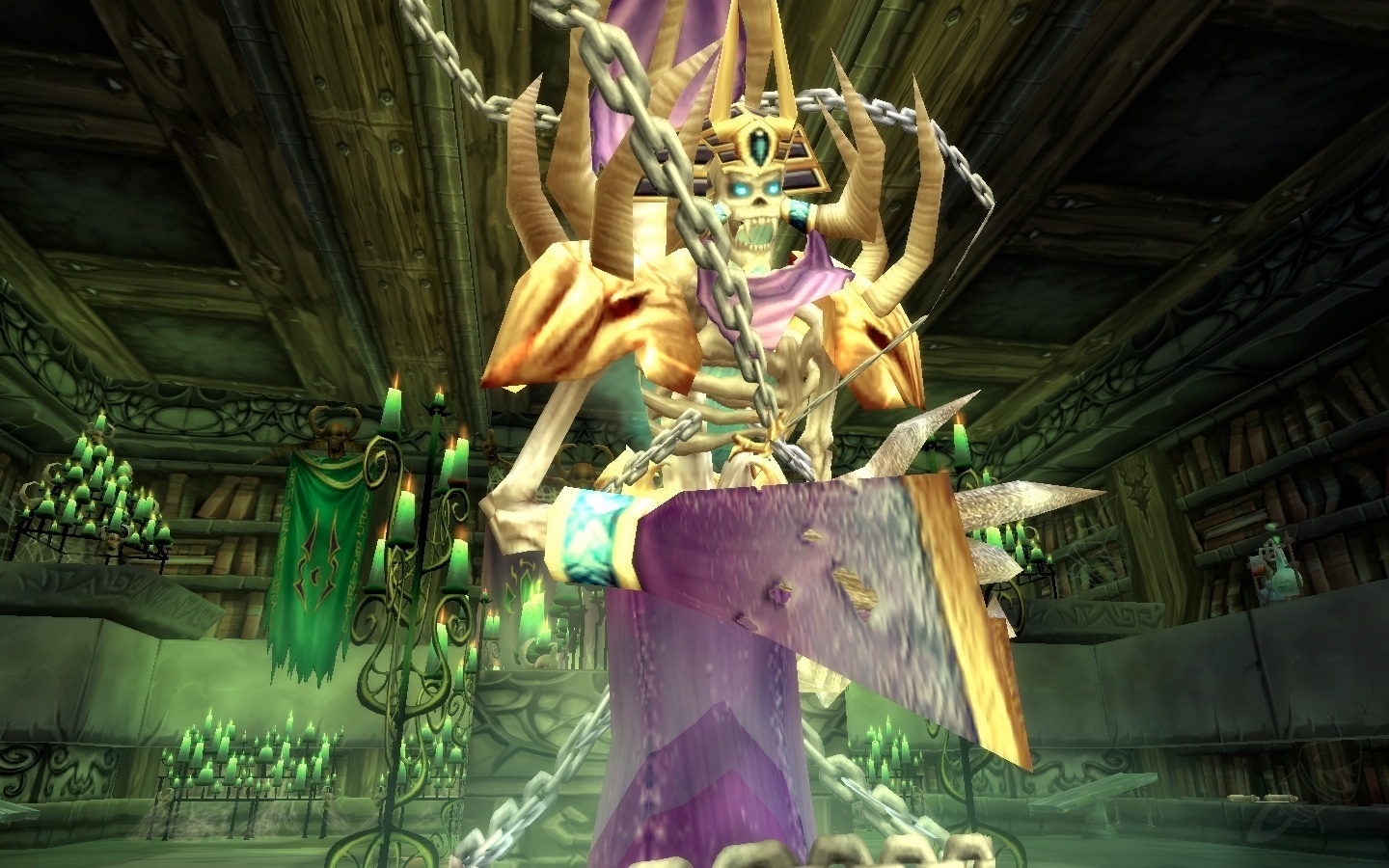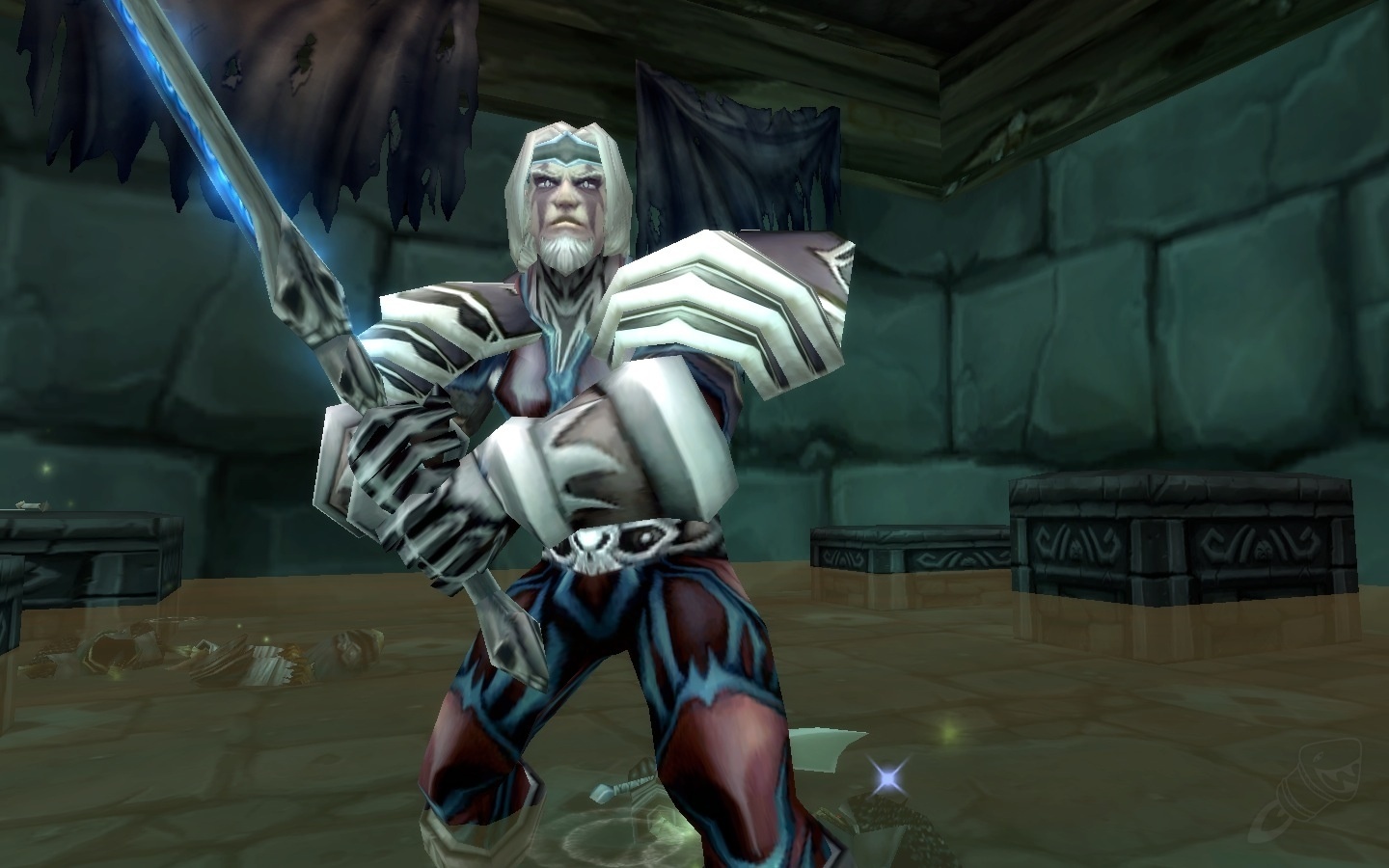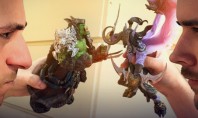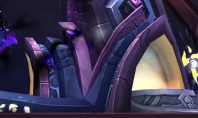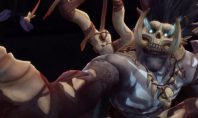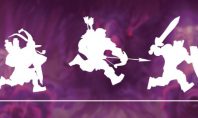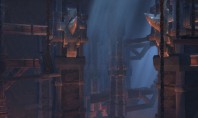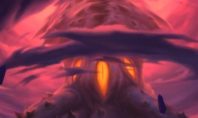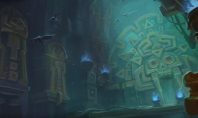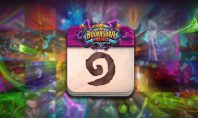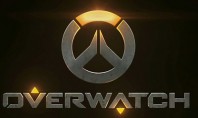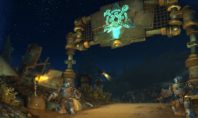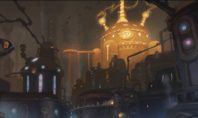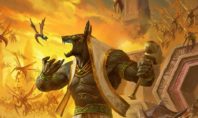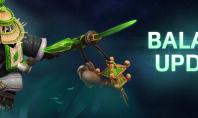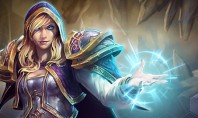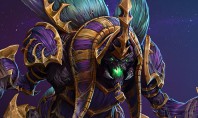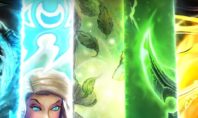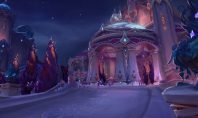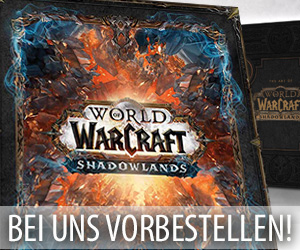WoW: John Staats spricht über die Entwicklung von Schlomance
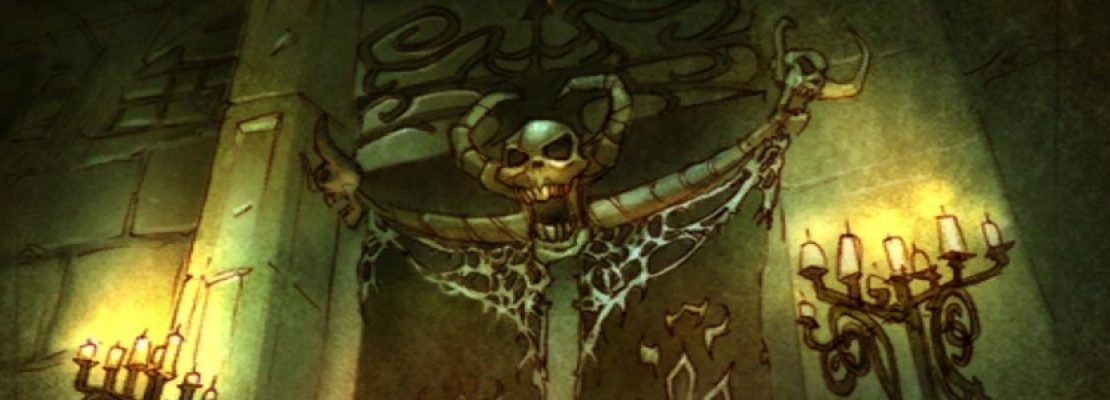
Im vergangenen März 2018 verkündete der früher als 3D Level Designer bei Blizzard Entertainment tätig gewesene Spieleentwickler John Staats, dass er aktuell an einem Buch mit dem Titel „The World of Warcraft Diary“ arbeitet, welches den Lesern sowohl die Arbeit von Blizzard Entertainment als auch den frühen Entstehungsprozess von World of Warcraft näher bringen soll. Dabei wird dieses Projekt mit der sehr frühen Entwicklungsphase beginnen und sich von dort aus dann langsam auf den Launch des Spiels im November 2004 zubewegen. Da solch ein aufwendiges Projekt selbstverständlich nicht unbedingt einfach umzusetzen ist und ein gewisses Startkapitel erfordert, soll dieses Buch durch am heutigen Dienstag, den 28. August 2018 nun endlich gestartete Kampagne auf Kickstarter finanziert werden.
Um möglichst viel Werbung für dieses Projekt zu machen, durften die Mitarbeiter von WoWhead in der vergangenen Nacht spannenderweise bereits einen ersten Auszug aus „The World of Warcraft Diary“ mit ihrer Community teilen. Dieser Abschnitt des Buches dreht sich um die Entwicklung der klassischen Version von Scholomance und liefert den Lesern eine Reihe von interessanten neuen Informationen zu der Entstehung dieses Projekt, der Arbeit des Entwicklungsteams, firmeninternen Abläufen und Problemen bei der Erschaffung dieser Instanz. Wer sich also für die Arbeit eines Spieleentwicklers oder die klassische Version von WoW interessiert, der sollte sich sowohl diesen Auszug als auch das fertige Buch nicht entgehen lassen.
Scholomance: Bones to Pick
In the following excerpt, we learn about the development of Scholomance–an unplanned dungeon. Originally known as “the keep microdungeon,“ a crypt intended for the outdoor non-instanced world, Scholomance took on a life of its own. If you started playing WoW after Mists of Pandaria, you may not be familiar with the original Scholomance–a sprawling dungeon with many mini-bosses that dropped unique loot like ![]() Sägeknochens Hemd and Necropile Raiment. You can view screenshots of the old instance, as well as links to all the old bosses on the Scholomance page.
Sägeknochens Hemd and Necropile Raiment. You can view screenshots of the old instance, as well as links to all the old bosses on the Scholomance page.
As you may remember from early WoW, Scholomance took a long time to run–something the developers noticed as well. Reducing the number of monsters in Scholomance was a complicated matter, as other parts of the game could be affected such as the economy. The excerpt also humorously goes into how there was hardly any time to test entire dungeons, so nobody realized how long instances would take to complete. Fixing Scholomance led the team to evaluate mob spawns across all low-level content, creating a better player experience.
At the turn of the century, I was a creative from Madison Avenue; an ad guy who built Quake levels for a hobby. Although I had no connections or experience in the games industry, Blizzard took the chance of hiring me to work on World of Warcraft. I was the company’s first 3D level designer, one of four to finish the project. By the time we’d crossed the finishing line, I’d built half of the game’s instanced dungeons, although my biggest contribution was filling their world with unique microdungeons–our internal term for non-instanced, public dungeons. These were the crypts, caves, mines, hive tunnels, and barrow dens, in which solo players quested and explored.
Having unique microdungeons was a big departure from the dev team’s original plan, which was to copy and paste the same one or two microdungeons across the world’s zones: Every time the players were to venture underground, they’d be met with the same cave, crypt, or goldmine. Maybe there’d‘ be a couple of each. That these spaces would have been recognizable bothered me, so I lobbied the team for custom-built play spaces. It was a hard sell because the dungeon department was the furthest behind schedule (among a number of departments behind schedule), so for years, I was pretty much alone in this school of thought. Few shared my vision for different layouts (at least, not enough to devote resources to it), so creating a variety of microdungeons was never added our already ridiculously-long task list.
WoW’s alpha testing eventually showed that familiar layouts diminished the fantasy of exploration. When the microdungeons were all the same, there was less of a reason to go into them. Without the anticipation of seeing something new, descending beneath the terrain wasn’t particularly special or interesting. After company-wide test, the producers relented to my nagging and gave me a license to make content in my free time. I could work after hours, or on weekends, to ninja in custom-made assets, as long as doing so didn’t affect my assigned workload, or create work for anyone else. Since I had been voluntarily working over ninety-hour weeks since I joined team 2, this wasn’t a big change.
To some of my teammates, I was addressing a non-critical issue; or making only minor upgrade. Some actually resented that I’d been given this freedom. Whether they didn’t understand, agree with, or care about what I was doing, it somehow rubbed them the wrong way that I was given permission to make whatever I felt was lacking. Possibly they thought I was adding to the workload, introducing bugs, or getting special treatment; and I’ll admit, there’s some truth behind these allegations. Regardless, my efforts yielded over 13 goldmines, 15 different caves, 6 crypts, 4 hive tunnels, and 3 barrow dens. I produced enough microdungeons that when one was repeated, it was barely noticeable (and we didn’t need to repeat anything more than once).
„History will be kind to me, for I intend to write it.“
-Winston Churchill
I’m being careful not to pat myself on the back too much. Improvements like this are common in development. While it was true, I worked longer hours than anyone on the team, I didn’t devote my nights and weekends because I felt a sense of devotion to Warcraft fans, or even fealty to the project: I did it because I’m a nerd’s nerd. I enjoyed doing it. I cranked out dungeons because I was selfish, not selfless. I saw my job as a unique opportunity to apply all the experience I’d accumulated from authoring homemade Dungeons and Dragons adventures and Quake levels into cool areas seen by millions of people. This point of view comes from the unhappy truth that creative decisions were often wrought in the furnace of circumstance; technology limitations, budgets, and unforeseen decrees from marketing (or other departments). Ten years in advertising taught me that much. Politics, ego, and turf protection were common workplace factors in creative fields. Yet none of team 2’s departments worked like this, and I recognized it to be a rare chance for self-expression. WoW was a skunkworks project and fertile ground for doing what I enjoyed: Makin‘ dungeons. Blizzard wasn’t only an employer, it was a patron.
After the team began seeing the positive results of customized microdungeons, I began taking requests, mostly from game designers, whom I was happy to oblige. The game designers were usually ahead of the the team in realizing what assets or features were needed. As the game got finished, they identified „content holes,“ and my weekend endeavors provided some alleviation to them. When Jeff Kaplan, who grew into the role of the team’s endgame designer, asked if I could add a crypt underneath the human keep in the Western Plaguelands, it wasn’t an unusual request. He said the keep was located in a cool location, on a lonely island in a spooky zone, but the building itself was something players had seen before. I’d built crypts before, and they were a fun archetype to work with, so I moved forward on what we called „the keep microdungeon.“ We didn’t even capitalize the name.
Because of Duskwood, there were already loads of eerie props to work with (we called our props doodads). However, the crypt texture set wasn’t a very robust one. The white stone textures for the walls and floors originated from an old art asset, an unused mausoleum doodad, that was built long before we had technological support for interior buildings. These antediluvian textures were somewhat unloved because they predated anyone on the dungeon team. Nevertheless, I added points of interest wherever I could. I reused the Razorfen Kraul bone-pile texture to flood a room with skeletons–like a macabre junkyard. I scattered remains and rubble props to give otherwise vacant rooms some wear-and-tear personality. Bones were everywhere. I arranged props into little areas of interest–like a ring of candles circling a sitting skeleton, rows of skulls, or conspicuous stacks of bones. None of my other crypts had been so sullied with osseous matter. These arrangements suggested that there was something „special“ about the areas…as if they were pieces of a forgotten story.
The game designers were ecstatic over the result. They asked for a couple more rooms, so that they could turn the keep microdungeon into a full-blown instance. They retrofitted my theme into the lore: The place became a school for necromancers. Chris Metzen, the team’s lore writer, liked the pitch and gave it a thumbs-up. He dubbed it Scholomance (but we kept calling it the keep microdungeon).
The Design Bone’s Connected to the Art Bone
Not everyone was happy the way things were going. After the place was spawned, quested, and instanced like a dungeon, the producers, designers, and I were confronted by a number of artists (who supported dungeons with textures and doodads). They felt they had been left out of the loop. They argued that they could have brought more flavor to the dungeon if they’d been brought into the process. Had they been included, they could have created better dungeon textures and props to suit the scholastic theme for my dingy crypt. They were right, of course, for I didn’t paint textures or create doodads. The issue surfaced during a low period of the team’s morale. Amongst the accusers were employees who were so burnt out they had stopped crunching altogether; they were regularly coming in late, playing games, and reading comics during work hours. Since the game designers and I had been voluntarily working past midnight, nearly every night, for months and weekends, we were incredulous at their complaint. I confess, I was too burnt out to show sympathy for their plight. I wasn’t about to deliver calligraphic invitations to my coworkers. I was too focused on the work to be even remotely diplomatic and relied on an assumption that everyone would simply decide their own level of involvement.
Despite our mutual irritation with one another, if the artists wanted to polish the new dungeon, then I and producers were happy to let them. The art team rolled up their sleeves and began working long hours to dial up the coolness of the sprawling crypt–they created tons of unique props to pull off an academic and gothic feel for the place; macabre bookshelves filled with gilded books, ornate candelabras, regal drapery, and lavish rugs. They’d even worked past midnight a couple nights, something many of them hadn’t done for months. They transformed my dingy crypt into a robust, active school of necromancy. Their newfound comradery even led to them doing an all-nighter, something I’d done only once (when art director Bill Petras and I were photo retouching zone maps for the BradyGames Strategy Guide for WoW). For a short while, it seemed everyone was pleased with the result.
The Art Bone’s Connected to the Code Bone
Our longstanding framerate watchdog for WoW was the game’s engine programmer, Scott Hartin. He’d shown, time and time again, that both artists and level designers ignored framerate restrictions by using too many textures or polygons in an area. He was one of the team’s strongest advocates for ensuring that WoW would run smoothly on low-end systems, and dutifully notified the producers, or the culprits, whenever clutter was slowing down the engine’s performance. Scott was consistent and fair about his peeves and blew the whistle only when he had to. Unfortunately, the game was so big, he frequently had to do this.
Scott informed the producers that the Scholomance was showing terrible performance. It was, by far, the worst in the game. The producers approached the artists with his concern, and eventually the blowback let back to me. The artists‘ theory was that I’d overcluttered the floors with too many bones and bits of rubble. „This is what happens when you do things on your own; you make mistakes, and no one is there to catch them,“ was the gist of their narrative. It sounded reasonable. I was, after all, the team’s biggest ninja. But what didn’t make sense to me was that I’d used a similar technique–littering the ground with bones and rubble–in both of my Razorfen dungeons and there was no framerate loss whatsoever.
After I’d investigated the issue, I’d discovered the framerate drop wasn’t from my prodigious use of bones along the floor, but rather chandeliers that had been custom-made for the Scholomance. Each chandelier used ten-thousand polygons (our props averaged around a few hundred). There were rows of them in some rooms, and when the player looked up they caused an unacceptable drop in framerate. I dutifully bounced the bug back into the artist’s court, but by this time, they’d moved on to other things. I guess the bad feelings between us hadn’t gone away. I pressed the issue to the point of pissing people off, but nothing changed, so I let it rest. This wasn’t the hill I wanted to die on.
The Design Bone’s Connected to the Spawn Bone
That battle I picked to fight began months after the game shipped, when the team was busy working on fixing bugs, getting PvP into the game, and creating raid content. The game had major holes in the mid-range dungeons, so the content devs were working particularly hard on Maraudon and Dire Maul. While team 2 was working on post-launch issues, I’d read a blog about a group of fans playing through Scholomance and was put off to discover a full-clear of the dungeon had taken six hours. Six hours! I called this to Jeff Kaplan’s attention, who was in charge of encounter design. Amidst all the minor and major post-launch changes in the game, Jeff acknowledged that shorter dungeons were proving to be more popular, but he didn’t think it was worth revisiting old stuff–especially since we were still lacking mid-ranged dungeons. His bandwidth was also choking on a race between guilds and developers over raid content. He was also worried about the vacuum of PvP content. Because the team was metaphorically performing the labors of Hercules, all at the same time, I let the issue rest. Perhaps Scholomance wasn’t as arduous as the article suggested.
At the time, only a couple developers had characters as high as I (Scott Hartin and artist Roman Kenney), and we liberally gave feedback…probably more than our coworkers wanted. When my druid was finally high-level enough to play through Scholomance. My dungeon party had lasted four hours until one of us had to leave. It was so late at night we couldn’t find a substitute, so we disbanded before reaching the final boss. I had empirical knowledge, that a full-clear of this dungeon was, indeed, six hours long. The next morning, I went back to Jeff’s office, to tell him again about the length. Ever patient, he explained that it wasn’t simply a matter of removing spawns, there might be quests that depended a number of drops and removing monsters might unbalanced quests.
Instead of taking the hint to let the matter rest, I talked to every quest designer, one by one, to see if removing monsters would upset the balance of any quest drops. After ascertaining there wouldn’t be a problem, I returned to Jeff’s office a week later with the „good news.“ He sighed wearily and explained that there were also trade skill recipes that used ingredients from loot tables–so reducing monsters could also affect the trade skill economy. „There’s lots of systems connected to monsters, and we also could be introducing bugs into the game by changing things.“ To him, it made more sense to add new content to the than to keep reworking old encounters. I told him that I understood and withdrew before he could tell me to not bother Eric Dodds (who was in charge of trade skills).
After I bothered Eric Dodds (who was busy with pages and pages of bugs, tweaks, and feedback), the two of us scheduled a time to look at high-level recipes. We used Thottbot, a fan-created database that was more up-to-date, faster, and easier to use than our internal tools. Eric determined that there were, indeed, other sources for ingredients found Scholomance, and that none of the tradeskills would be affected by a reduction of monsters. While we looked, Eric made notes to raise some of the drop rates on rare ingredients, remarking that they were way too low. He groaned with dismay as he penciled in a new task: „Check out drop rates for all the high-level ingredients.“ I thanked him and planned for my next move.
Over the next few days I nonchalantly walked past Jeff’s office to see if he was busy. I acted as if I was walking past his door, and I cannot say if Jeff noticed the frequency of my flybys. I didn’t want to catch him when he was too stressed out. Even though Jeff was easy to talk to, interrupting him while he was actively putting out fires elsewhere wasn’t going to serve my cause. Days later, the opportunity presented itself, and I darkened his doorway once again. I sheepishly explained that none of the trade skills would be affected by reducing the number of monsters. He exhaled heavily, but his smile was a sign of immediate recognition: I’d worn him down! He despondently said, „OK. Tell Steven (one of our spawners who helped with encounters) to load up the dungeon…and we’ll look at it.“ He held up a hand and continued, „But if the producers veto any changes (for fear of introducing bugs), then their decision is final.“ I cheerily assured him I’d already checked with the producers and they had no objections.
Steven Pierce and Geoff Goodman (who scripted our most complicated monsters) shared an office next to Jeff’s, and they’d overheard the conversation. Steve had already saved his work and was loading the Scholomance „worldtab“ into wowedit, our game editor. After Scholomance loaded into Steve’s machine, we zoomed into the dungeon and looked at the spawns. Steven, Geoff, and Jeff immediately guffawed when they saw the monster count. „Whoa!“ they marveled, „This place is soooo over-spawned!! Oh, man…that is just ridiculous!“ Hearing them crack up was rewarding to hear and provided a much-needed relief from all the weeks‘ worth of tension I’d created in hassling poor Jeff. I enjoyed their reaction as they perused the spawns in each room.
Encounter designers were responsible for designing each isolated fight. After a monster group was designed, tested, balanced, they moved on to the next group. After every group was deemed fair and fun (and debugged), they were handed off to the spawn team–who filled out the dungeon with the approved groups. The devs who designed and balanced each monster group weren’t the same devs populating play spaces.
The reason why the encounter designers didn’t know the length of their own dungeons was because they’d either forgotten what it was like to clear a dungeon, or never had time to playtest the final product. Fans might be surprised by this comment but encounter designers didn’t have time to perform „legit“ playtests on live servers (and internal server were rarely stable enough to sustain the six-hour exercise). Meetings, hot-fixes, and high-priority tasks made it nearly impossible to schedule a full-test of the final product. Without tools for quickly equipping a high-level test character, it took long enough for multiple people to prepare a dungeon crawl, let alone play through one. Besides, the time it took to perform a legitimate playthrough wasn’t considered important because it was assumed dungeons were supposed to take a long time (based on paradigms established by previous MMOs).
Every single room the designers looked at elicited snorts of laughter. „This is nuts! There should be about a third as many monster spawns!“ The revelation that the designers and the spawners should have be working closer together prompted Jeff to ask me if there were other dungeons that needed to be despawned. I shrugged and mentioned the newbie goldmine in Mulgore was pretty bad. This puzzled Jeff because it wasn’t an instanced dungeon. Surely low-level microdungeons weren’t as important. I told him I’d played a tauren on the live servers, and I leveled so many times within one trip through the goldmine that my character was too high-level by the time I reached the end! The monsters and quests had turned from yellow, to green, to gray before I finished. His eyebrows raised in alarm, „Are you serious?“ Even though a newbie microdungeon wasn’t as highly-scrutinized as end-game content, it was slightly embarrassing that no one had caught this earlier. Steven loaded it onto his machine and we look at the spawns in the Mulgore microdungeon. Roars of laughter ensued. Steve removed three-quarters of the spawns, and nary a word was uttered about unbalanced quests and tradeskills. Jeff told Steven and Geoff that they needed to look at all the dungeons, and make sure their play spaces were less time-consuming. I sat behind them for a few hours and kibitzed, while they corrected all the worst-case scenarios. After we were done, Jeff thanked me for being such a pest, and we all went back to work.

